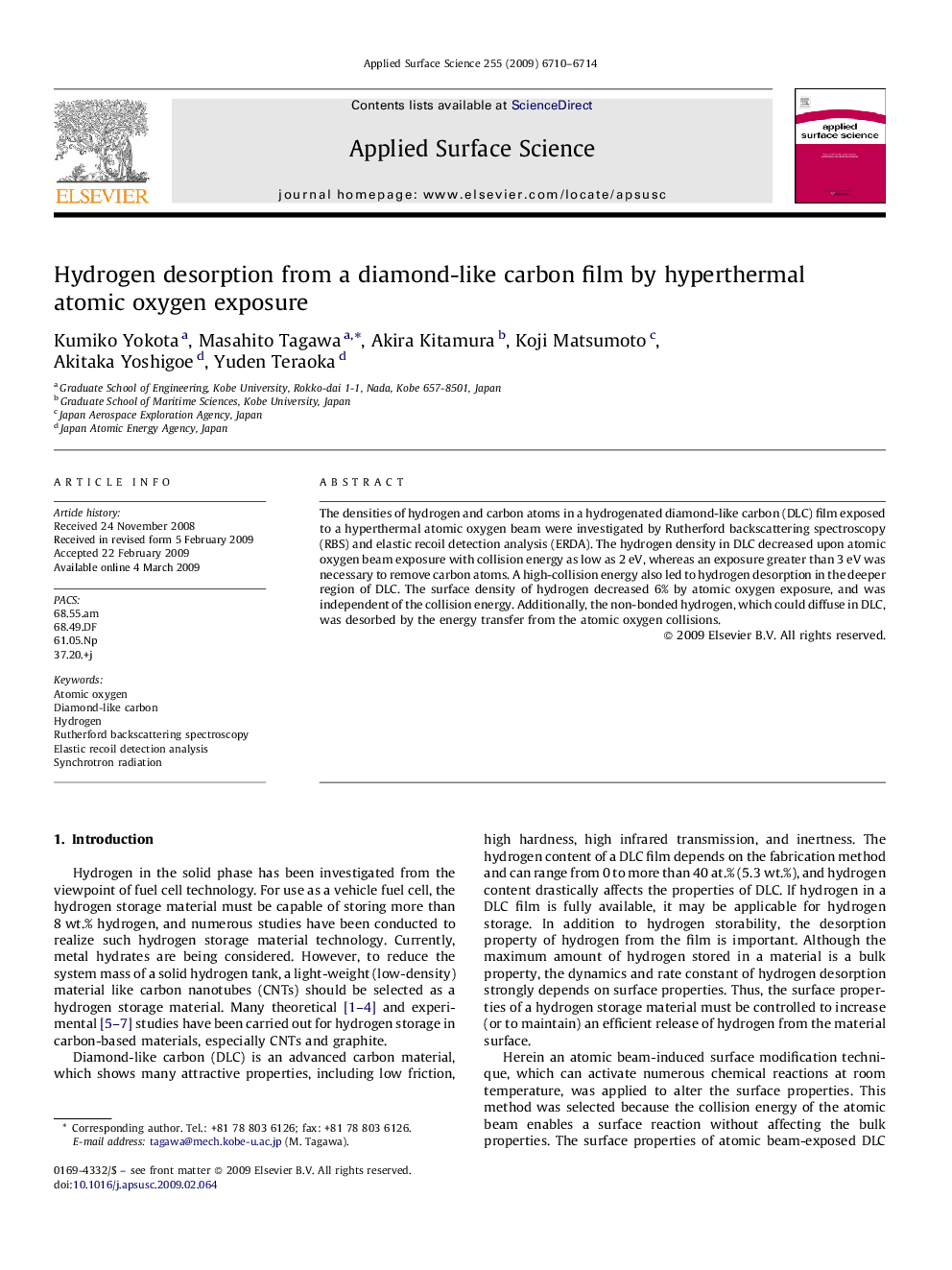| Article ID | Journal | Published Year | Pages | File Type |
|---|---|---|---|---|
| 5359813 | Applied Surface Science | 2009 | 5 Pages |
Abstract
The densities of hydrogen and carbon atoms in a hydrogenated diamond-like carbon (DLC) film exposed to a hyperthermal atomic oxygen beam were investigated by Rutherford backscattering spectroscopy (RBS) and elastic recoil detection analysis (ERDA). The hydrogen density in DLC decreased upon atomic oxygen beam exposure with collision energy as low as 2Â eV, whereas an exposure greater than 3Â eV was necessary to remove carbon atoms. A high-collision energy also led to hydrogen desorption in the deeper region of DLC. The surface density of hydrogen decreased 6% by atomic oxygen exposure, and was independent of the collision energy. Additionally, the non-bonded hydrogen, which could diffuse in DLC, was desorbed by the energy transfer from the atomic oxygen collisions.
Keywords
Related Topics
Physical Sciences and Engineering
Chemistry
Physical and Theoretical Chemistry
Authors
Kumiko Yokota, Masahito Tagawa, Akira Kitamura, Koji Matsumoto, Akitaka Yoshigoe, Yuden Teraoka,
